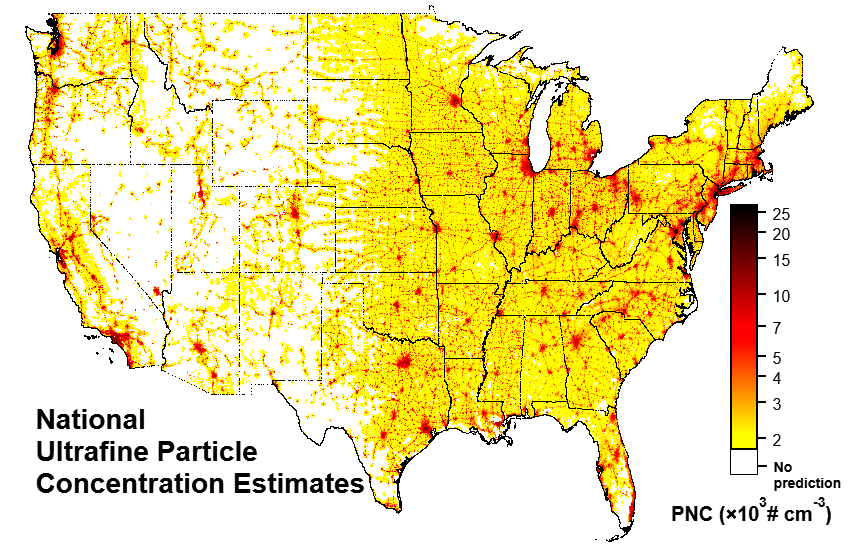Ultrafine and ultra-toxic?
First nationwide ultrafine particle study paves the way for understanding health effects and revisiting government regulation.
It is widely known that air quality contributes to various health conditions thanks to nationwide studies of particulate matter (PM). However, there is growing evidence that the most toxic particles are those smaller than 1/50 the diameter of a human hair called ultrafine particles (UFP). Studies on the health effects of ultrafine particles have been inconclusive and inconsistent due to the lack of a national-scale UFP study, but a team led by Carnegie Mellon University Professors Albert Presto and Allen Robinson, postdoctoral researcher Provat Saha, and collaborators from the University of Washington and Virginia Tech, worked to change that.
As part of the Center for Air Climate and Energy Solutions (CACES), the team developed the first national model estimate for airborne ultrafine particle concentrations. The model will ultimately lead to a better understanding of UFP’s effects on health and hopefully one day impact air pollution policy. The findings were published in Environmental Science and Technology.

Source: CACES
National ultrafine particle concentration estimates
The center’s initial project was focused on figuring out how to measure air pollution at high spatial and temporal resolutions. After successfully completing studies at local levels, the team recognized that most American cities share similarities—people buy the same cars and stop to eat at the same fast-food restaurants—so the researchers developed a national estimate.
The team analyzed a national particle number concentration (PNC) dataset that consisted of fixed-site measurements from 19 urban locations, 15 rural locations, and four near-airport locations. The team also used their mobile laboratory to gather spatially dense data—the number of ultrafine particles in any given area (PNC) and the mass of those particles (PM2.5) from Pittsburgh PA, Oakland CA, and Baltimore MD.
With this data, the team created a land-use regression model—a statistical model that uses land-use, such as traffic on roadways—to predict concentrations in locations where they didn’t have measurements. They concluded that the average urban PNC is roughly three times larger than the rural PNC. PNC peaks in downtown and commercial areas indicating that local sources, including traffic and commercial cooking, drive this variation. Additionally, they found that PNC and PM2.5 are moderately correlated at the city scale but uncorrelated nationally. This indicates that moving forward epidemiologists studying the health effects of UFP should concentrate on effects of PNC versus those of PM2.5.
Current U.S. pollution regulations target PM2.5 but not PNC. Because PNC was found to be strongly related to traffic and urban air pollution, and its intra-city distribution was different from PM2.5, perhaps targeting PM2.5. is not enough to reduce PNC. Regulations will likely need to focus specifically on PNC in order to reduce concentrations.
With this, the team’s research on PNC and PM2.5 is just beginning. They will be building on this study to analyze PM2.5 based on sources, such as traffic and commercial cooking. They plan to then unfold the results of both studies to tell the environmental justice story that lays beneath them.
